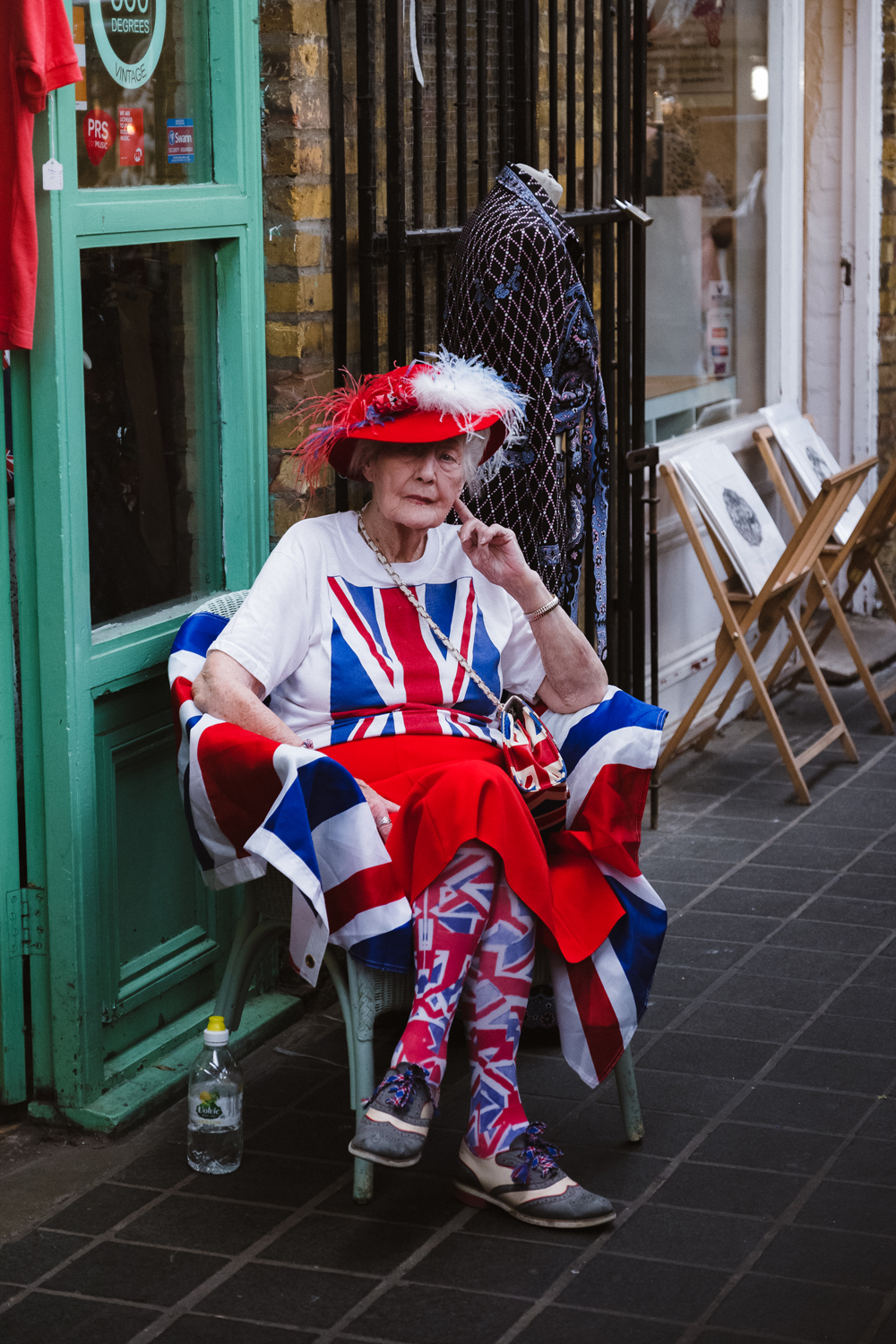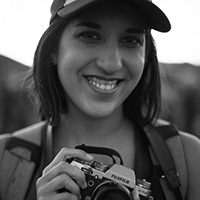Travel Blogging with Fujifilm
Photography is still a relatively new passion in my life. In fact, 5 years ago I didn’t even own a camera. I loved to travel but my photography was limited to iPhone selfies in front of monuments.
It wasn’t until the Spring of 2015, when I had a chance to visit India, that things changed. I witnessed a country filled with vibrancy, colours and life. I no longer wanted to be in front of the camera, but behind it. Though I didn’t know it at the time, this trip was the catalyst for my love affair with travel photography.

The hunt for the right camera
Inspired by my trip to India I decided to invest in a camera. First, and foremost it had to be lightweight. I also wanted something that I could grow with. So even though I didn’t understand the technical aspects of a camera, that didn’t bother me. I knew I could learn.
I was able to test my friend’s X-Pro and XT-1 and in the end I purchased the XT-1 and XF 18-135mm F/3.5-5.6. I’m not going to give technical reasons for my decision, because I had none. I just remember loving the feel of the XT-1 in my hands. The dials seemed convenient and I liked the placement of the viewfinder.
I spent about a year playing around with the camera, taking it with me on all my travels, but ultimately a good camera didn’t mean I was a good photographer. My photos were obvious, lifeless and boring. Things were not going as I had hoped.
Getting creative and finding my style
After a year, I expanded my gear to include the XF35mm f/2.0. This was a great investment as it’s still one of my favourite lenses. Learning with a prime lens was really helpful. It meant that I had to move around my subject; I couldn’t rely on zoom. I started to get a better understanding of distance and framing, which made me realize that good travel photography wasn’t limited to the main attractions. I turned my focus to documenting my experiences through culture, landscapes and people – the reasons why I loved travel in the first place.
My kit expanded with every new destination. I found myself in situations where I wanted to go wider so I got the XF 16mm f/1.4 and XF 23mm f/2.0. This helped when I was exploring landscapes and streets. Afterwards I added the XF 55-200mm F/3.5-4.8 since I was planning a few trips with wildlife. Finally, when the XT-2 came out, I upgraded.


A need for versatility
This expanded kit was great but I encountered two issues. The first was weight. My lenses were suitable for travel when I had a car at my disposal, but there was no way I was going lug heavy camera equipment with me on longer trips.
The second issue was that I was missing shots because I was busy worrying about which lens to use. The constant switching became a burden and potential risk, and meant a dirtier sensor.
I realized I needed versatility for travel, without compromising on quality. Enter the XF 16-55mm f/2.8. At the moment this is my go-to travel lens. It covers the focal length of three of my primes and the constant f/2.8 gives me the option to shoot indoor in low-light situations. Although it’s bulky and initially felt off-balance on the XT-2, I’ve now gotten used to the feeling.
I’m likely to travel with this lens in 90% of my situations and often bring the XF 35mm f/2 as a secondary lens. But every travel destination has different requirements, which brings me to workflow.


Workflow – Preparation
It’s important to remember that I share my photography through my travel blog, And Then I Met Yoko, so my workflow isn’t just for getting my shots but for cultivating the experiences that I want to share with my readers.
I go through three stages. The first and most important is preparation; I always start with ideation. I keep my mind open, I don’t fixate on potential logistical issues and I let the visuals speak to me. I’ll comb through photography magazines, National Geographic, my world atlas, Condé Nast and Pinterest looking for inspiration for my next travel destination.

Itinerary planning
Once I settle on a destination, I open up Google Maps and start plotting points. I’ll record any sights I want to shoot, restaurants I want to try (because my readers love seeing food and I love eating it) and all the logistical things like accommodation, car rental and airports. Doing this gives me a general overview of distances and timing.
Once I’m able to clearly see where I want to visit, I start the process of how I’m going to visit. I begin with the crucial golden hour periods. I use the “Golden Hour” app to determine sunrise and sunset times and directions. These become my anchor points for each day. After, it’s easy to add in the remaining sights based on opening hours and location. This exercise gives me my rough itinerary.


What to bring?
Developing an itinerary gives me an overall idea of what gear I’ll need and which lenses to bring. For short trips when I have a car at my disposal or if I’m attempting long exposure or blue hour then I know the answer to the dreaded question – “tripod or no tripod?”
For a two-week trip I’ll carry at least five 64GB memory cards. I generally don’t fill them all, but I’ve had cards go corrupt and since I shoot both raw and jpg (for real-time social media stories) they fill up quickly. My cards are stored in a durable carrying case. These are inexpensive and offer better protection than those flimsy cases that the cards come in.
My gear fits perfectly into my Peak Design 20L Everyday backpack. I love the design of this backpack with the swivel straps. This allows me to access my gear without taking the bag off. It’s also been effective in keeping my equipment dry when I was out shooting in the rain.
If I’m hiking, I bring my Peak Design clip. This little gadget is probably my favourite hiking accessory. It allows me to secure and release my camera onto my backpack strap, giving me a hands-free hike without the constant thudding of a camera against my body.


Workflow – Travelling
Talking to locals
Having an itinerary is helpful but never binding. While I travel, I talk to locals and ask them questions like, “Where is your favourite spot to catch the sunset?” or, “Where is a great place to people watch?” Locals give a unique perspective that adds a story behind a photo.
Preparing for weather
The one thing I can never predict is weather, which is why I love the XT-2 and all my weather-sealed lenses. I’ve spent full days shooting in the rain and my camera had no glitches. To battle the rain, I pack my lens hoods and extra wipes. When I’m in colder conditions I keep my batteries in my pockets, closest to my body, to preserve their lifespan.


Booking guides vs. tours
I don’t typically book long organized tours. Tour companies tend to take me to the obvious places, during peak times. I find this stressful and it often results in messy and uncreative shots. They’re also less flexible and won’t be able to wait while I try to get creative.
This doesn’t mean that I don’t see value in guides and short tours. In fact, having a local guide gives greater insight into culture and the logistics of getting the shot. Depending on my budget and destination, I will try to source a local guide or participate in niche tours that are smaller and move at a slower pace.

Enjoy the travelling
It’s easy to become caught up in the photography and forget the real reason for travel. We can’t truly discover new cultures, people and places if we’ve got a camera in front of our faces the whole time. My knee-jerk reaction used to be to pull out my camera and start shooting as soon as I arrived somewhere. Now I try to keep the camera away while I discover the area first. This not only means I’m more present, but it helps me avoid the obvious, initial shots.

Workflow – Post-processing
The first thing I do when I get home is backup everything on a hard drive and cloud storage. I use Amazon, considering they offer free unlimited photo storage for anyone with a Prime account.
The last part of my workflow is post-processing, and for this I use Lightroom. I enjoy editing because I love taking flat, raw files and recreating my memories. There’s so much artistry in editing and I try to balance the reality of what I saw with my creative flair.
Once my edits are done I export the photos for my blog, making sure to select only the ones that tell my story visually.

Why do I think blogging is important?
My desire to blog stemmed from a mixture of moments. Firstly, I had a growing frustration with social media platforms like Instagram. I would look at travel bloggers who led these seemingly perfect lives, eating breakfasts on their terraces in Bali with their Infinity pools. Yes, it was beautiful, yes it created a desire to travel. But I always felt an overwhelming sense of unattainability.
At a similar time in my life I was visiting Japan for holiday. I was admiring a temple, when a Japanese woman in her 70s approached me and asked, “Would you like to know the story of this place?”
I was skeptical, what did she really want?
To my surprise, the woman, Yoko, just wanted to share her love of her city with me, a complete stranger. That afternoon she gave my husband and I a tour of Nara. She showed us places that we would have never otherwise experienced. And she did this all because she also enjoyed travel and believed that showing kindness to others would inspire them to do the same when she was in a foreign place.
Yoko’s philosophy lit a spark inside me. Travel had enriched my life in many ways. It helped me open up to other cultures and appreciate the differences in people. So, I created my travel blog, “And Then I Met Yoko.” My hope is that through photography and my visual travel guides, my readers can see themselves in my photos and be inspired to seek out their own travel moments.

https://www.instagram.com/andthenimetyoko/
https://www.facebook.com/AndThenIMetYoko/

“Hi! I’m Natasha Lequepeys, a self-taught travel photographer and blogger. I picked up a camera in 2016, after visiting India and wanting to capture my memories in a richer format than an iPhone. I love landscapes and street photography but I adapt my style to the destination based on what I feel best represents it. I currently shoot with an XT-2 and an array of Fujinon lenses. I invite you to check out my blog where you can find my visual travel guides – developed in hopes of inspiring others to travel as well.”





